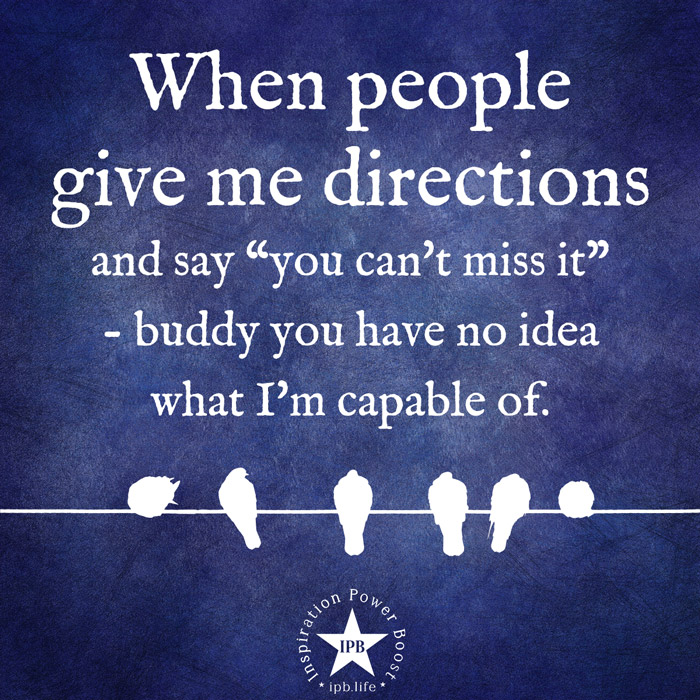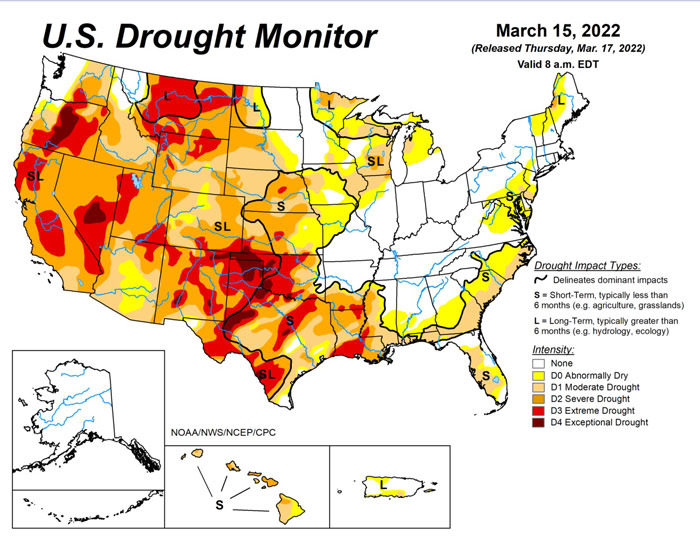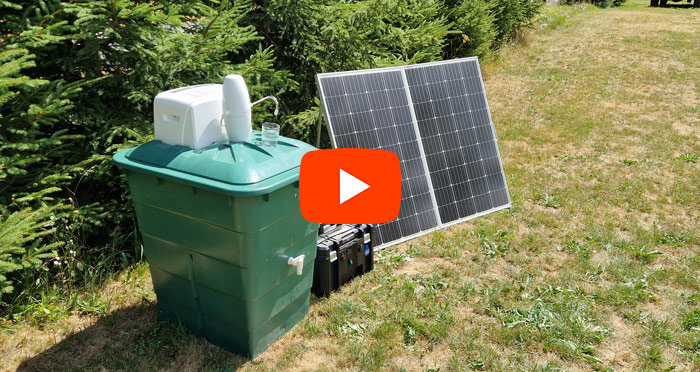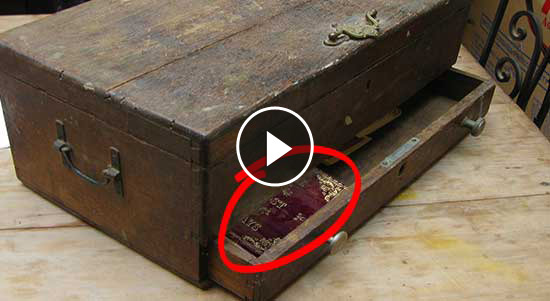
When People Give Me Directions And Say You Can’t Miss It Graphic © inspirationpowerboost.com
Navigational Challenges: Overcoming Directional Ambiguity
Receiving directions with the assurance “you can’t miss it” can often be a misleading statement. Each individual possesses a unique set of perceptual abilities and cognitive processing skills that influence their capacity to navigate and interpret spatial cues. What may seem evident to one person can be easily overlooked or misunderstood by another.
The phrase “you can’t miss it” fails to account for the diverse range of factors that can contribute to navigational challenges. Visual impairments, cognitive disabilities, or simply being unfamiliar with an area can all pose significant obstacles to following seemingly straightforward directions. Additionally, directional instructions frequently rely on subjective descriptions, such as “turn right at the big tree,” which can be interpreted differently by different individuals.
Effective navigation requires clear, unambiguous communication that considers the recipient’s perspective and potential limitations. Providing specific, objective landmarks or using precise measurements can help mitigate misunderstandings. Furthermore, acknowledging the potential for confusion and offering alternative routes or contact information for further assistance can greatly improve the overall navigational experience.
In an increasingly diverse and inclusive society, it is crucial to recognize that the phrase “you can’t miss it” may inadvertently exclude or marginalize individuals who face unique challenges in spatial awareness or orientation. By adopting a more considerate and empathetic approach to giving directions, we can create a more accessible and inclusive environment for all.
Navigating with Empathy: A Path Towards Inclusivity
Navigational challenges extend far beyond the realm of physical disabilities or unfamiliarity with an environment. They can also arise from cultural differences, language barriers, or varying cognitive styles. By acknowledging and embracing these diverse perspectives, we can foster a more inclusive approach to providing directions.
For instance, certain cultures may prioritize landmarks or visual cues over numerical distances or cardinal directions. In such cases, relying heavily on precise measurements or street names may prove ineffective. Instead, incorporating recognizable landmarks, such as prominent buildings, natural features, or even symbolic references, can resonate better with individuals from these cultural backgrounds.
Language barriers can also pose significant navigational obstacles. Idiomatic expressions or colloquialisms that seem perfectly clear to native speakers may be completely opaque to those unfamiliar with the local vernacular. Employing clear, concise language and avoiding ambiguous phrases can help bridge this communication gap, ensuring that directions are universally comprehensible.
Furthermore, individuals with cognitive differences, such as those on the autism spectrum or with conditions like ADHD or dyslexia, may process spatial information differently. For some, visual aids or step-by-step illustrations may be more effective than verbal or written instructions. Offering multiple modes of communication can cater to diverse cognitive styles and enhance overall navigational clarity.
By actively seeking to understand and accommodate these varied perspectives, we can move beyond the assumption of a one-size-fits-all approach to navigation. Embracing empathy and flexibility in our communication styles can transform the simple act of giving directions into a powerful tool for fostering inclusivity and promoting accessibility for all individuals, regardless of their unique backgrounds or abilities.
Related Inspirational Quotes
“The single biggest problem in communication is the illusion that it has taken place.” – George Bernard Shaw
“If you think you are too small to make a difference, try sleeping with a mosquito.” – Dalai Lama
“I am so clever that sometimes I don’t understand a single word of what I am saying.” – Oscar Wilde
“You cannot shake hands with a clenched fist.” – Indira Gandhi
“Don’t be afraid to be amazing.” – Anon.
😳 What Tinnitus Does To Your Brain Cells (And How To Stop It)
After 47 years of studies and countless brain scans done on more than 2,400 tinnitus patients, scientists at the MIT Institute found that in a shocking 96% of cases, tinnitus was actually shrinking their brain cells.
As it turns out, tinnitus and brain health are strongly linked.
Even more interesting: The reason why top army officials are not deaf after decades of hearing machine guns, bombs going off and helicopter noises…
Is because they are using something called "the wire method", a simple protocol inspired by a classified surgery on deaf people from the 1950s...
This Crazy Off Grid Device Literally Makes Drinkable Water From Fresh Air:
According to NASA, the U.S. is expecting a 100-YEAR LONG MEGADROUGHT.
It's already begun. Ask the farmers in California. They know.
Every survivalist knows that water is of critical importance. You NEED an independent water source that you can count on!
As an interesting "survival rehearsal" - imagine that you turned the tap on right now and nothing came out. How long would you last?
But what if there was another water source literally hidden in plain sight? That's right, I'm talking about the atmosphere!
The amazing thing about getting water from the natural moisture in the air... is that it is ALWAYS available.
This gives you real water security!
Learn more about how to tap into "Nature's secret water reservoir" and stay hydrated when TSHTF!
Watch the video:
Most People Don't Have The Guts To Try This:
An amazing discovery in an abandoned house in Austin, Texas: A lost book of amazing survival knowledge, believed to have been long vanished to history, has been found in a dusty drawer in the house which belonged to a guy named Claude Davis.
Remember... back in those days, there was no electricity... no refrigerators... no law enforcement... and certainly no grocery store or supermarkets... Some of these exceptional skills are hundreds of years of old and they were learned the hard way by the early pioneers.
>> Click here to find out about them now
We've lost to history so much survival knowledge that we've become clueless compared to what our great grandfathers did or built on a daily basis to sustain their families.
Neighbors said that for the last couple of years Claude has tried to unearth and learn the forgotten ways of our great-grandparents and claimed to have found a secret of gargantuan proportions. A secret that he is about to reveal together with 3 old teachings that will change everything you think you know about preparedness:






